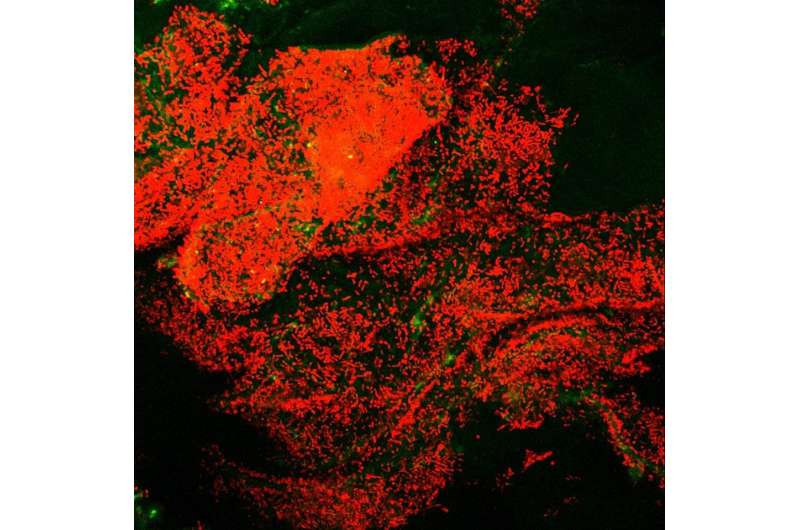Lactobacillus reuteri in a biolfilm
Scientists on the Norwich Research Park have discovered a key mechanism by which gut bacteria colonise and adhere to their specific hosts.
The finding may lead to new, improved probiotics with optimised abilities to colonise our gut and battle infections by forming strong associations with the host as biofilms. It also helps our understanding of how the vast community of microbes in our gut, known as the microbiota, establishes a durable and specific relationship with the host, that helps to keep us healthy.
This new study builds from previous work in Dr. Nathalie Juge's group at the Quadram Institute. Funded by the Biotechnology and Biological Sciences Research Council, researchers in the Juge Group use Lactobacillus reuteri bacteria, which are a common member of the gut microbiota in many different animals, as a model to study how gut commensal bacteria adapt to their host organism.
They had previously identified a key protein used by bacteria to attach themselves to the gut surfaces. Known as SRRP (Serine Rich Repeat Protein) this class of adherence proteins or adhesins, has been identified as being involved in infection and biofilm formation in disease-causing bacteria. Biofilms form when groups of microbes come together on a surface. The researchers previously discovered that SRRP was also produced in non-pathogenic species, such as Lactobacillus, where they are vital for biofilm formation in the gut of mice.
In this new collaborative study with the University of East Anglia and published in the Proceedings of the National Academy of Sciences, the team of researchers working on this study obtained structural and biochemical information on how this adhesin binds to the host and identified unique features in the region used for binding. By working out the structure of these features and running computer simulations, the team was able to show that the binding region underwent a change in its conformation depending on the pH. This impacts on its ability to bind to different components in the gut.
As the pH within the gut changes as you move through the system, and deeper into the mucus layer that lines the gut, this may be part of the mechanism used by bacteria to adapt to their environment within the gut.
Having identified the pivotal role for this feature in defining the association of these beneficial bacteria to the gut, they can now exploit this knowledge as a novel strategy to fight against pathogen biofilms and for the design of probiotics well adapted to their host where their benefits can be realised fully.
More information: Saannya Sequeira et al. Structural basis for the role of serine-rich repeat proteins fromLactobacillus reuteriin gut microbe–host interactions, Proceedings of the National Academy of Sciences (2018). DOI: 10.1073/pnas.1715016115
Journal information: Proceedings of the National Academy of Sciences
Provided by Quadram Institute




















